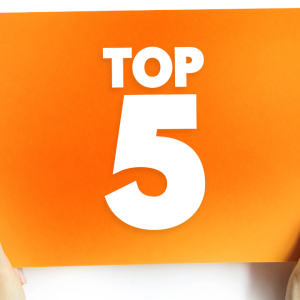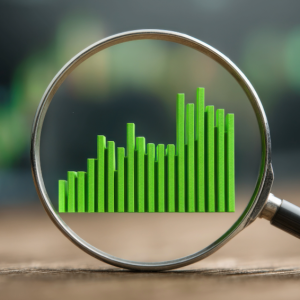For collectors, every item in a collection holds a unique story, a piece of history, and, in many cases, significant value. Ensuring that collectibles remain in the best possible condition over time requires dedication and understanding of proper preservation techniques. Without proper care, time and environmental factors can cause even the most cherished pieces to deteriorate, diminishing their beauty, historical integrity, and worth. This guide will provide essential tips for maintaining your collection, whatever it may be, so that each item remains a lasting treasure for years to come.
Why Collection Care Matters
Every collectible, from vintage coins to sports memorabilia, art, and antiques, is subject to degradation over time due to factors such as light, temperature, humidity, and handling. Caring for a collection is not merely about keeping items looking new but is also about preserving their historical and sentimental value. When preserved properly, a collection can become an heirloom, passed down through generations or potentially a high-value item in the market.
Essential Tips for Prolonging the Life of Your Collection
1. Recognize the Unique Needs of Each Item
Different types of collectibles require different care, so understanding each item’s unique properties is the first step to longevity:
- Paper-based items (like stamps, comics, and photographs) are prone to yellowing, fading, and becoming brittle with time, especially under UV light.
- Metals (coins, jewelry, medals) can tarnish or rust when exposed to humidity and oils from handling.
- Textiles (vintage clothing, banners, and fabric-based artifacts) may weaken or discolor with excessive exposure to light, heat, or moisture.
Understanding the specific materials in your collection will help you select the appropriate storage, cleaning methods, and handling techniques for each item.
2. Store Items in a Stable Environment
Environmental factors can dramatically affect a collection’s condition. Proper storage can help control these elements:
- Temperature: Aim to store items in a climate-controlled space, ideally between 65-70°F (18-21°C), to prevent warping, cracking, or fading.
- Humidity: Maintain a relative humidity level of 40-50%. High humidity can lead to mold and corrosion, while low humidity may cause certain materials, such as wood and paper, to dry out and crack.
- Light Exposure: Ultraviolet (UV) light from sunlight and even some indoor lighting can cause significant fading and deterioration. Keep collectibles out of direct sunlight, and for highly sensitive items, consider UV-protective glass or acrylic in display cases.
3. Choose the Right Storage Solutions
Appropriate storage containers can make a considerable difference in preserving collectibles:
- Archival Boxes and Sleeves: For paper items, acid-free and lignin-free archival boxes and sleeves prevent yellowing and brittleness. Polyethylene, polypropylene, or polyester sleeves work well for protecting photos, postcards, and trading cards.
- Display Cases: Use cases made from glass or acrylic, which offer excellent protection while allowing items to be viewed. For valuable and light-sensitive items, look for cases with UV protection.
- Protective Tubes and Folders: Rolled items such as posters and maps are best stored in protective tubes to prevent creasing, while oversized documents may require archival folders.
4. Handle Collectibles with Care
Even with careful storage, improper handling can lead to damage:
- Wear Gloves: Natural oils on hands can stain and degrade items, particularly metals and paper. Cotton gloves are recommended for handling paper items, while nitrile gloves are suitable for handling metals.
- Hold by the Edges: Avoid touching the main surfaces of items, especially photographs, artwork, and currency. Holding items by their edges helps preserve their surfaces.
- Limit Handling: Handle valuable and fragile items as little as possible. For pieces you wish to view or share regularly, consider creating digital copies to minimize handling of the originals.
5. Regularly Inspect and Clean Items
Routine inspection and cleaning are essential to maintaining a collection:
- Inspect for Changes: Regularly check your collection for any signs of mold, discoloration, or pest damage. Identifying these issues early can prevent further degradation.
- Use Soft Tools for Dusting: A soft brush or microfiber cloth is ideal for gently dusting items, especially those on display. Avoid using water or cleaning solutions, as they can damage certain materials. When dealing with high-value items or antiques, consult a professional conservator for cleaning.
- Rotate Displayed Items: Prolonged display of items can increase exposure to light and environmental changes, leading to faster degradation. Consider rotating your displayed items to give each piece time in safe storage.
6. Maintain Proper Documentation
Thorough documentation is not only helpful for personal organization but can also be invaluable for insurance, resale, and provenance:
- Condition Reports: Note the condition of each item when acquired and keep track of any changes over time.
- Photographs: Photograph items regularly, especially after acquiring them, to capture their current state. Detailed photos can serve as documentation for insurance or valuation purposes.
- History and Provenance: If possible, keep records of each item’s history, including purchase details, previous owners, or any associated stories.
7. Consider Professional Conservation Services
For highly valuable or delicate items, consider consulting with a professional conservator, who can provide specialized treatment and advice. Conservators are trained to handle fragile, historical items and may offer techniques to address specific preservation challenges without causing harm.
Collectiblepedia: Your Trusted Resource for Collector Knowledge and Community
Preserving the beauty and integrity of your collection requires commitment, knowledge, and the right resources—and that’s where Collectiblepedia comes in. As a platform dedicated to collectors, Collectiblepedia provides essential insights, guidance, and community support to help you care for your valuable items. Whether you’re a beginner or a seasoned collector, Collectiblepedia offers detailed articles, tutorials, and expert advice on best preservation practices, allowing you to make informed decisions about safeguarding your collection.
Explore Collectiblepedia today to connect with a community of passionate collectors, access a wealth of knowledge on preservation techniques, and find inspiration to continue building and protecting your collection for years to come. With Collectiblepedia, every item in your collection can be a lasting treasure, cherished and preserved for the future.







